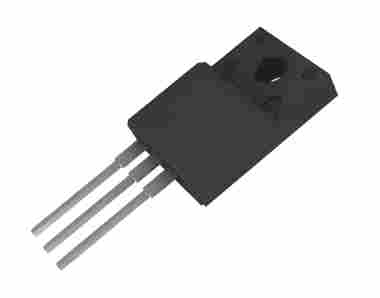Zener diode is a special type of diode that utilizes reverse breakdown characteristics to achieve voltage stability. Due to its low price, simple structure, and fast response speed (especially at low power), it plays a key role in many electronic products and circuits, with its main application areas concentrated in the following areas:

Reference voltage source:
Core application: This is the most classic and widely used application scenario for voltage regulators. Utilize its highly stable reverse breakdown voltage (Vz) characteristic.
Application products: Almost present in all electronic devices that require stable voltage reference.
Power supply: Inside switch mode power supplies (SMPS) and linear regulators (especially low dropout linear regulators (LDOs)), it serves as the reference voltage (` Vref `) for error amplifiers, ensuring the accuracy and stability of the output voltage. For example, mobile phone chargers, computer power supplies, and power adapters for various devices.
Voltage meter/multimeter: used as a reference voltage source for analog-to-digital converters (ADCs) to ensure measurement accuracy.
Precision instruments and meters, such as oscilloscopes, signal generators, data acquisition cards, etc., commonly use voltage regulators for internal reference circuits.
Internally integrated circuits: Many analog and digital ICs integrate voltage regulator diodes as local reference sources.
Reference source for low dropout linear regulator (LDO):
Specific application: Although LDO itself is a voltage regulator, its core requires a highly stable reference voltage (` Vref `) to compare with the output voltage divider. In low-power and low-cost LDOs, a voltage regulator diode is often used as the 'Vref'.
Application products: Widely used in battery powered equipment, such as:
Portable consumer electronics: mobile phones, tablets, Bluetooth earphones, smartwatches (providing different stable voltages for different modules internally).
IoT devices: sensor nodes, wireless modules.
Handheld devices: In situations where cost and size are sensitive, and the input and output voltage difference is small.
Overvoltage protection circuit:
Core principle: Utilize its reverse breakdown characteristics for voltage clamping. When the voltage on the protected line exceeds Vz, the voltage regulator conducts, clamping the voltage near Vz to prevent subsequent sensitive components from being damaged by high voltage. Usually, a series current limiting resistor is required.
Application products:
Various interface circuits: USB port, HDMI port, Ethernet port, RS232/485 communication interface, etc., to prevent external surges or electrostatic discharge (ESD) from damaging internal chips.
Power input terminal: To prevent accidental voltage rise of the power supply (such as hot plugging, lightning induced surge).
Relay/inductive load drive circuit: absorbs the back electromotive force generated when the relay coil is disconnected, and protects the drive transistor.
Automotive electronics: Protect in car electronic devices from overvoltage shocks caused by sudden load drops.
Signal amplitude limiting/clipping:
Core principle: Utilize its breakdown characteristics to limit the amplitude of the signal. Connect the voltage regulator in reverse parallel to the signal line (or in combination with a resistor). When the signal voltage exceeds Vz or falls below - VF (forward voltage drop), the diode conducts and flattens the peak value of the signal.
Application products:
Audio equipment: Limit signal amplitude to prevent amplifier overload distortion or protect speakers. Sometimes used to produce special sound effects.
Communication equipment: Limit the amplitude of RF or IF signals to prevent receiver overload.
Analog signal processing circuit: protects the ADC input or limits the signal range of specific processing stages.
Simple voltage regulator:
Core application: For situations with low current and low efficiency requirements, a voltage regulator diode can be directly connected in series with a current limiting resistor to form the simplest voltage regulator circuit. The input voltage is stepped down through a resistor, and the load is connected in parallel with the voltage regulator. The load voltage is Vz.
Application products:
Local power supply for low-power digital circuits, such as providing a small current stable voltage for analog comparators, low-power sensors, etc. inside microcontrollers.
Constant current/voltage regulation drive for LED indicator lights: used in conjunction with resistors to provide relatively stable current.
Old style or low-cost equipment: still used in some simple devices that are extremely cost sensitive and have very low power.
Summarize key application areas:
Power system: ubiquitous reference voltage source (switching power supply, internal linear regulator), and overvoltage protection (input/output terminals).
Interface and Communication: Overvoltage/ESD Protection (for various ports).
Analog signal processing: signal clipping/clipping (audio, communication, instrumentation).
Precision measurement: reference voltage source (multimeter, oscilloscope, etc.).
Automotive electronics: overvoltage protection (to cope with complex on-board electrical environments).
Portable/low-power device: reference source for LDO, easy to stabilize low current.
Core advantages and applicable scenarios:
The core advantages of voltage regulator diodes are low cost, simplicity and ease of use, and fast response speed. This makes it highly competitive in low-power, low current, simple voltage stability or protection, and cost sensitive application scenarios. However, its drawbacks are lower efficiency (especially when the input and output voltage difference is large, power consumption is concentrated on the current limiting resistor), lower power, and usually lower accuracy and temperature stability than dedicated reference voltage source chips (such as bandgap reference sources). Therefore, in situations where high precision, high current, and high efficiency voltage regulation are required, more complex linear or switching regulator schemes are usually used. However, even in these complex schemes, the voltage regulator diode still often exists as an internal reference source or protective component.
It can be said that the voltage regulator diode is a fundamental and important "small component" in electronic circuits, especially in providing stable reference and protection functions, with extremely wide applications.
